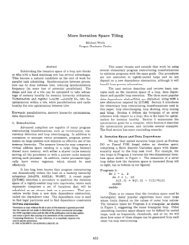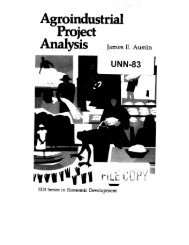Problem 1: Loop Unrolling [18 points] In this problem, we will use the ...
Problem 1: Loop Unrolling [18 points] In this problem, we will use the ...
Problem 1: Loop Unrolling [18 points] In this problem, we will use the ...
Create successful ePaper yourself
Turn your PDF publications into a flip-book with our unique Google optimized e-Paper software.
FP multiply/divide 15 2 4<br />
2. Functional units are NOT pipelined (i.e., if one instruction is using <strong>the</strong> functional unit,<br />
ano<strong>the</strong>r instruction cannot enter it).<br />
3. All stages except EX take one cycle to complete.<br />
4. There is no forwarding bet<strong>we</strong>en functional units. Both integer and floating point results<br />
are communicated through <strong>the</strong> CDB.<br />
5. Memory accesses <strong>use</strong> <strong>the</strong> integer functional unit to perform effective address calculation.<br />
All loads and stores <strong>will</strong> access memory during <strong>the</strong> EX stage. Pipeline stage EX does both <strong>the</strong><br />
effective address calculation and memory access for loads/stores.<br />
6. There are unlimited load/store buffers and an infinite instruction queue.<br />
7. Loads and stores take one cycle to execute. Loads and stores share a memory access<br />
unit.<br />
8. If an instruction is in <strong>the</strong> WR stage in cycle x, <strong>the</strong>n an instruction that is waiting on <strong>the</strong><br />
same functional unit (due to a structural hazard) can begin execution in cycle x , unless it<br />
needs to read <strong>the</strong> CDB, in which case it can only start executing on cycle x + 1.<br />
9. Only one instruction can write to <strong>the</strong> CDB in a clock cycle.<br />
10. Branches and stores do not need <strong>the</strong> CDB since <strong>the</strong>y don’t have WR stage.<br />
11. Whenever <strong>the</strong>re is a conflict for a functional unit or <strong>the</strong> CDB, assume program order.<br />
12. When an instruction is done executing in its functional unit and is waiting for <strong>the</strong> CDB,<br />
it is still occupying <strong>the</strong> functional unit and its reservation station. (meaning no o<strong>the</strong>r<br />
instruction may enter).<br />
13. Treat <strong>the</strong> BNEZ instruction as an <strong>In</strong>teger instruction. Assume L.D instruction after <strong>the</strong><br />
BNEZ can be issued <strong>the</strong> cycle after BNEZ instruction is issued due to branch prediction.<br />
14. <strong>In</strong>itially, R1 < -16.<br />
Fill in <strong>the</strong> execution profile for <strong>the</strong> first two iterations of <strong>the</strong> above code fragment in Table 2,<br />
including<br />
• The reservation station <strong>use</strong>d by each instruction. This should include both <strong>the</strong><br />
functional unit type and <strong>the</strong> number of <strong>the</strong> reservation station. If multiple reservation<br />
stations of a particular type are available, associate early program order with lo<strong>we</strong>r<br />
cardinality.<br />
• The cycles that each instruction occupies in <strong>the</strong> IS, EX, and WR stages.<br />
• Comments to justify your ans<strong>we</strong>r such as type of hazards and <strong>the</strong> registers involved.


![Problem 1: Loop Unrolling [18 points] In this problem, we will use the ...](https://img.yumpu.com/36629594/5/500x640/problem-1-loop-unrolling-18-points-in-this-problem-we-will-use-the-.jpg)













